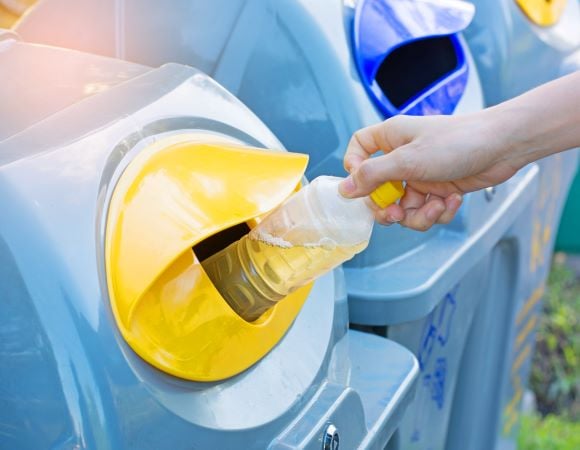Solving the plastic puzzle

The production, use and disposal of plastic has created a global pollution crisis, how can SMEs work with consumers to solve waste and make the best use of this material?
The plastic puzzle: The production, use and disposal of plastic has created a global pollution crisis. Solving the plastic puzzle is proving tricky as this multipurpose material is so embedded into our production and consumption requires a full system approach. But many options are available – viable alternatives to plastic are being developed, alongside easy ways to reduce use and recycle plastic safely so it can be reused again and again. And most importantly, thinking imaginatively about how to reduce the need for plastic across all business lines.
- Understand the plastic pollution challenge: recycling rates may be higher than ever before but if we look back, only 9 per cent of all the plastic ever produced has actually been recycled.[1] Most of the is landfill, litter or has been incinerated. To tackle this, the EU’s Single Use Plastics Directive came into force in July 2021. It phases out the most commonly found and littered single use plastic items like plates, straws, stirrers and cutlery. If you are in the hospitality sector, look at ways to eliminate their use or work with your suppliers on alternative products. Communicate with customers about why you are taking these steps and encourage them to get on board. If you are use a lot of packing then read on to find out how to reduce it. Find out more about the plastic pollution challenge (in English).
- Alternatives to single use plastic? If you can’t cut out plastics entirely just yet, Euroconsumers has research insights on the best alternatives. Our recent four-country study found reusable plastic shopping bags had the lowest environmental footprint, performing better than paper, cotton or hessian bags. A Life Cycle Analysis of 96 different types of shopping bags in Belgium, Italy, Spain and Portugal looked at all the energy, water, material and transportation resources that go into producing a shopping bag. It then tested the bags for durability and found that the reusable LPDE plastic bag came out top once all of the lifespan factors were taken into account. Read more about how the Life Cycle Assessment shopping bag study and rankings here (in English).
- Biodegradable plastic or ‘bioplastic’ is made from, organic materials like vegetable oils or corn or cereal crops which breakdown after use if disposed of properly. They are a popular alternative to single us plastic but create carbon emissions through harvesting, processing and shipping raw materials. Social challenges also emerge if land is turned over from food cultivation to crops-for-plastic cultivation. Read about the challenges of bioplastics in full (in Portuguese). These examples show that simply replacing single use plastic with another material is not the answer.
[1]https://www.researchgate.net/publication/318567844_Production_use_and_fate_of_all_plastics_ever_made

